We’re approaching the 50th anniversary of the 1967 Boston Marathon, when a 20-year-old journalism student from Syracuse University named Kathrine Switzer challenged the all-male tradition and rules by running the 26.2 miles. Officials tried to stop her by interfering and pulling her off course, but she outran them.
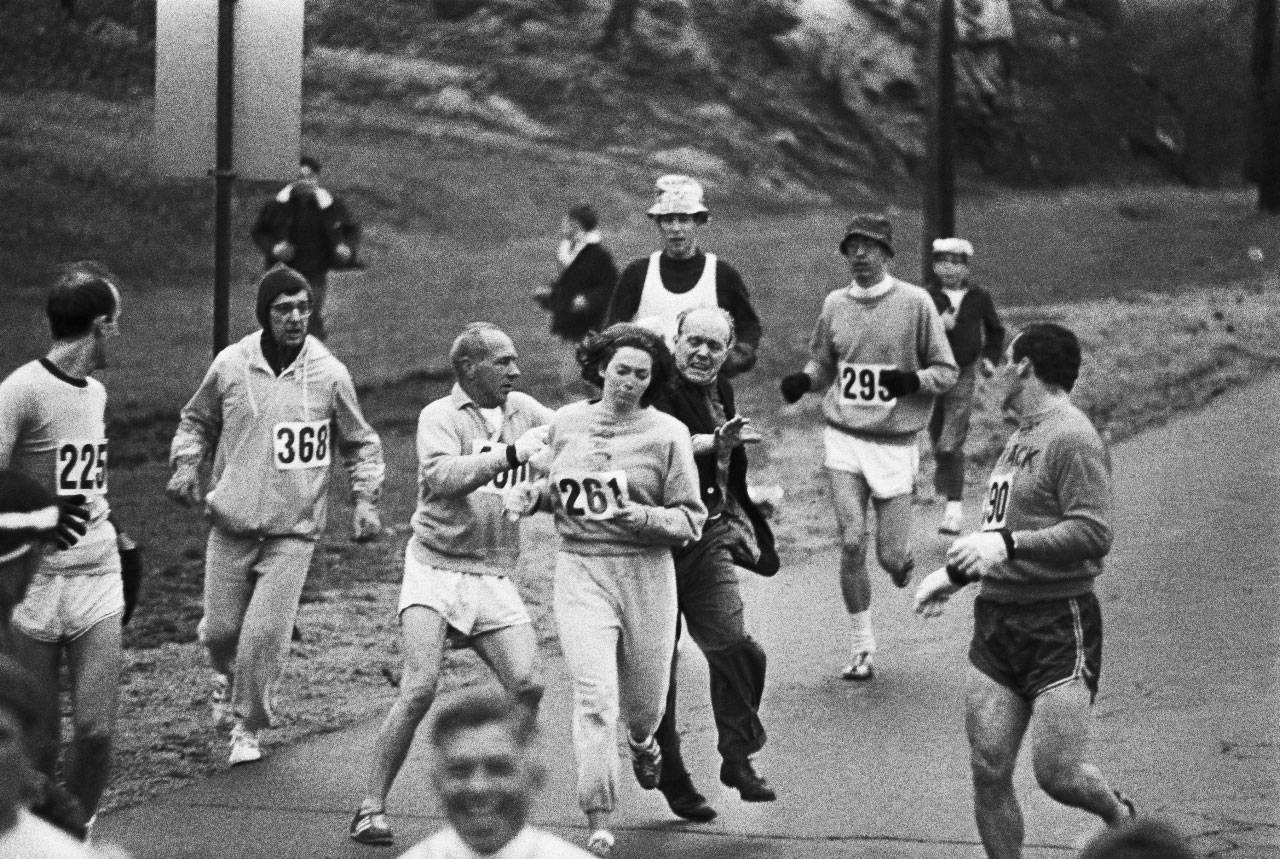
An infamous photo of Kathrine Switzer being confronted by event officials at the 1967 Boston Marathon.
Five years later, six women staged a sit-in at the starting line of the New York City Marathon to demand to run the race with the men. They were protesting rules of the Amateur Athletic Union (the governing body of the sport that sanctioned marathons in those days). The AAU had relented to allow women to run sanctioned marathons, but only if the women had a separate starting line.
It seems outrageous and almost difficult to imagine that American women—who now make up more than half the entrants in U.S. road racing events—would face such barriers to participation. When I began running and training for marathons exactly one decade after the 1984 Summer Olympics introduced the women’s marathon, I took for granted that I could run 26 miles wearing nothing but skimpy shorts and a tank top, and that the guys I ran with would be friendly and supportive.
Fast forward to 2012. I met an awesome woman named Stephanie Case during the Grand to Grand Ultra multi-day stage race; we shared a tent, and I learned about her work as a human rights lawyer for the UN. We kept in touch over the years, and I followed her online posts with awe and admiration as she worked for human rights in extremely challenging situations, such as in a South Sudan refugee camp (see related post).
In 2014, Stephanie started a non-governmental organization called Free to Run to promote running and other sports for women in regions where cultural or religious beliefs and the threat of violence keep girls and women from participating in athletics and outdoor recreation. She started in Afghanistan, and now the program is spreading to other areas.
In three years, in spite of being a small volunteer organization, Free to Run has made a significant impact not only on the girls and women who’ve experienced hiking, 10Ks, marathons, skiing, skating, volleyball and even ultras with Free to Run’s support; but also, on the communities they live in, by changing attitudes and promoting tolerance.
This is why I’ve committed to raise $10,000 for Free to Run over the next three months, and I hope you will support my effort through my Crowdrise page!
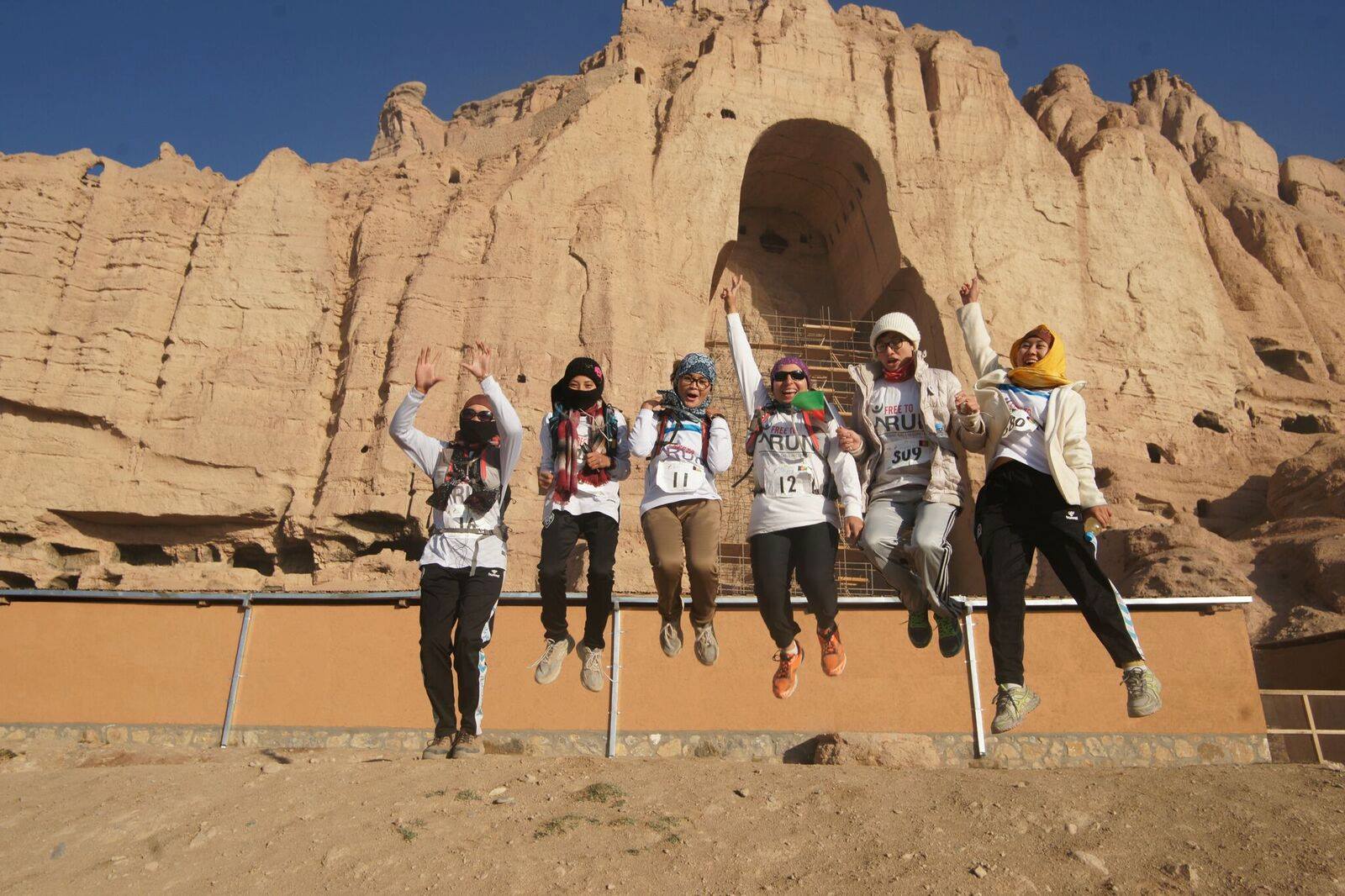
Some of the women participants who were trained and encouraged by Free to Run in the 2016 Marathon of Afghanistan, which also held a 10K that many girls and women ran. The marathon, started in 2015, took pace in the relatively peaceful region of Bamian, famous for 6th-century giant Buddha statues that the Taliban destroyed in 2001, leaving hollowed-out formations like the one pictured here.
“When I started training, I couldn’t run on the street,” says Zainab, who became the first woman to complete the marathon in Afghanistan, in 2015, as described in this video below. “We had just one day training on the street, and cars would stop; the children were stoning us; the people said bad words, like, ‘Prostitutes, why don’t you stay at home?'”
Thanks to Zainab’s example in 2015, five young women ran the marathon and more than 100 ran the 10K last year. Free to Run’s blog post about the event describes a scene involving one of the runners that harkens back to that of Kathrine Switzer:
“It was her first time running on her own, and she had never felt more free. A sharp reminder of the reality of running in Afghanistan came in the form of a young man on a bike on the side of the road, who made a beeline for her and attempted to knock her down. After lunging out of its path, Hameda dusted herself off and raced on. She was a bit shaken, but a motorbike wasn’t going to stop her from achieving the goal she had set months before.” That blog post also describes several progressive men, who are members of a mountain-running club that collaborates with Free to Run, who supportively ran with and encouraged the women.
Free to Run is about more than running and sports, explains Stephanie. It’s about promoting tolerance and confidence among these girls and women, and changing the attitudes of society around them. “In places like Afghanistan, the simple act of hiking or running outside, especially for women and girls, is a powerful thing. We believe through sports that women and girls can reclaim public space, and that ultimately changes the way in which society view females.”
Highlights from Free to Run’s work over the last couple of years, as listed on their website, include:
- Over 50 female students from sports clubs in Afghanistan trained for and participated in a 10km race outdoors in the Central Highlands region.
- Zainab, a Free to Run Ambassador, became the first Afghan woman to run a full marathon in her country.
- Two ultramarathon teams from Afghanistan, including the first mixed-gender sports team from the country, successfully completed two 250km self-supported footraces in the Gobi Desert and Sri Lanka.
- 20 female students have gained access to weekly ski lessons and 5 women competed in the 2016 Bamian ski competition.
- Nelofar, a Free to Run Ambassador and ultra athlete, started a running club of 20 women in the north of Afghanistan and successfully organized a half marathon for International Women’s Day.
- Female refugees in Hong Kong who were previously reluctant to leave their homes are now participating in outdoor activities on a regular basis.
- Free to Run’s refugee running team in Hong Kong received an award from the local running community for their achievements.
“In one of our more conservative regions where our team has been practicing for over six months now, it has changed the community’s perspective,” says Taylor Smith, Free to Run’s program manager in Afghanistan. “Before, our program officer was having trouble recruiting girls, not because of lack of interest, but because of lack of permission; girls’ families were not comfortable with their daughters running in public. Four months later, those families started sending their daughters, sisters and wives out to meet our Free to Run team to run. They told us, ‘Because you have been running here regularly, our families decided it’s safe for us to come as well.’
“Our goal for 2017 is to deepen our impact on girls and young women, and to turn them into strong leaders in their communities. We have recruited and developed core teams in three regions in Afghanistan who come together to practice sports three to four times a week; we’ve also integrated educational opportunities into these practices and hikes, such as lessons on the environment and human rights. We want to expand these opportunities and create larger teams, which is why we need fundraising!”
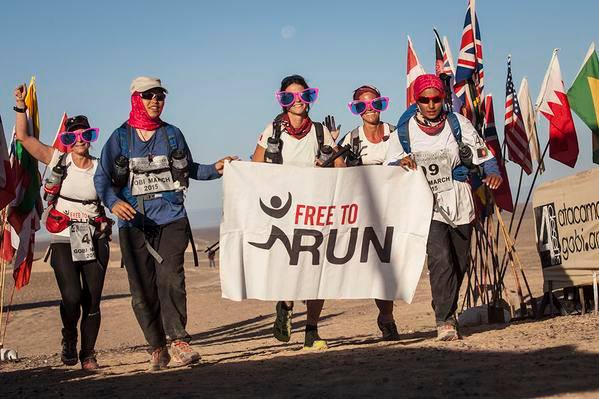
In 2015, Stephanie and other Free to Run supporters mentored Nelofar, 19, and Zainab, 25, to become the first female ultramarathon team from Afghanistan to complete a 250K stage race.
All of this has happened because Stephanie dared to think big and take action. “The things that I’m most proud about in life have started out as crazy and impossible ideas,” she said during her recent TedTalk in Switzerland.
Think about how Americans’ views of women running changed in one generation. Let’s help change other parts of the world where women sorely need not just athletics, but basic rights and education, by using the power of running and recreational sports to bridge divides. Recently, Free to Run started a groundbreaking mixed-gender training team in Kabul. Imagine the progress toward peace and gender equality that could happen if Free to Run’s work could spread.
I’m embarking on this fundraising campaign over the next three months because it coincides with training and attempting the most difficult athletic challenge I’ve ever faced: the self-supported, 155-mile Mauna to Mauna Ultra from May 14 – 20. I anticipate it’ll be harder than the Grand to Grand Ultra or any 100-miler I’ve done because of the humidity and all the different climate zones and types of terrain we’ll face on Hawaii’s Big Island, from rain forests to the cold of Mauna Kea, along with having to carry food and gear for the week in a pack. If I doubt my ability, I’ll think of the determination of Stephanie, Nelofar and Zainab, who together completed the Gobi Desert stage race (read Stephanie’s blog post about this experience).
What You Can Do:
- Donate to my Crowdrise page and share the link with your friends.
- Follow Free to Run on Facebook and on twitter.
- Watch the videos embedded here, and read the content on Free to Run’s website.
For Further Reading and Listening:
My recent interview with Stephanie Case on UltraRunnerPodcast, in which she talks about Free to Run and about her harrowing New Year’s Day rescue in the Alps following an accident during which she almost died.
“The Real Story of Kathrine Switzer’s 1967 Boston Marathon”: a gripping first-person account by Kathrine Switzer.
“You’ve Run A Long Way, Baby,” my first-person essay on female role models, body image and the power of running.

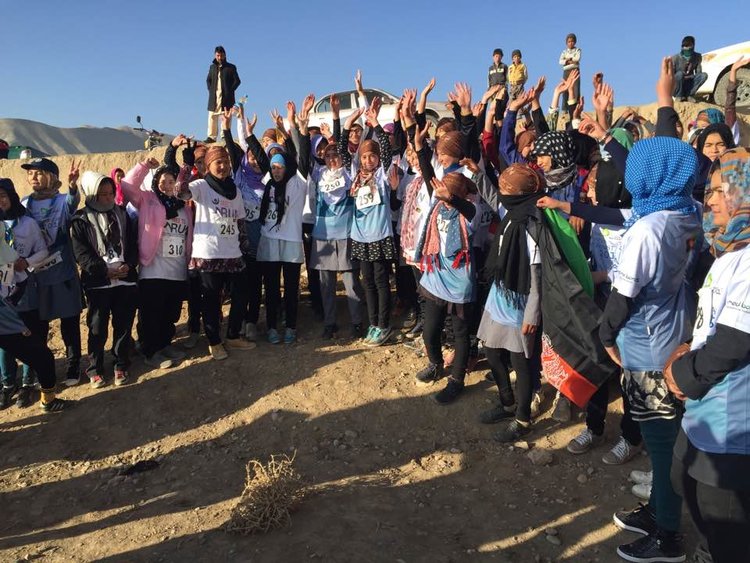
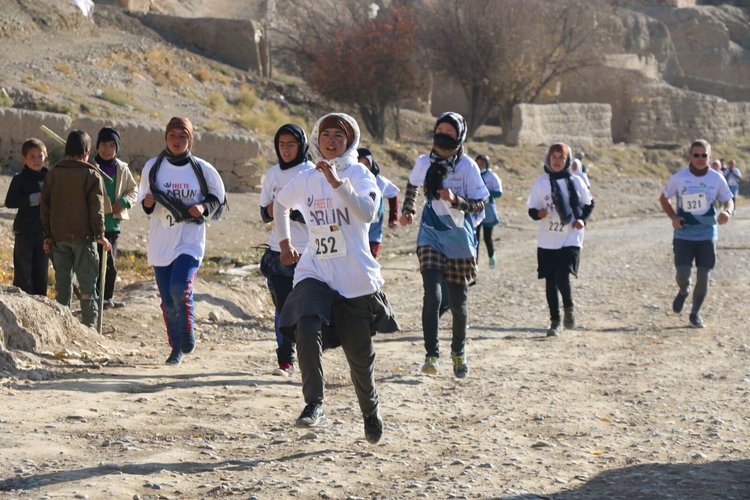
What an inspirational post! I’m going to link this to my class web-page (students are currently working on essays exploring the roots of gender inequity) and see if I can’t get some of my young female (and male!) runners fired up.
Fascinating story and it’s really amazing to see how much the world can change in 50 years – or how much *we* can change it.